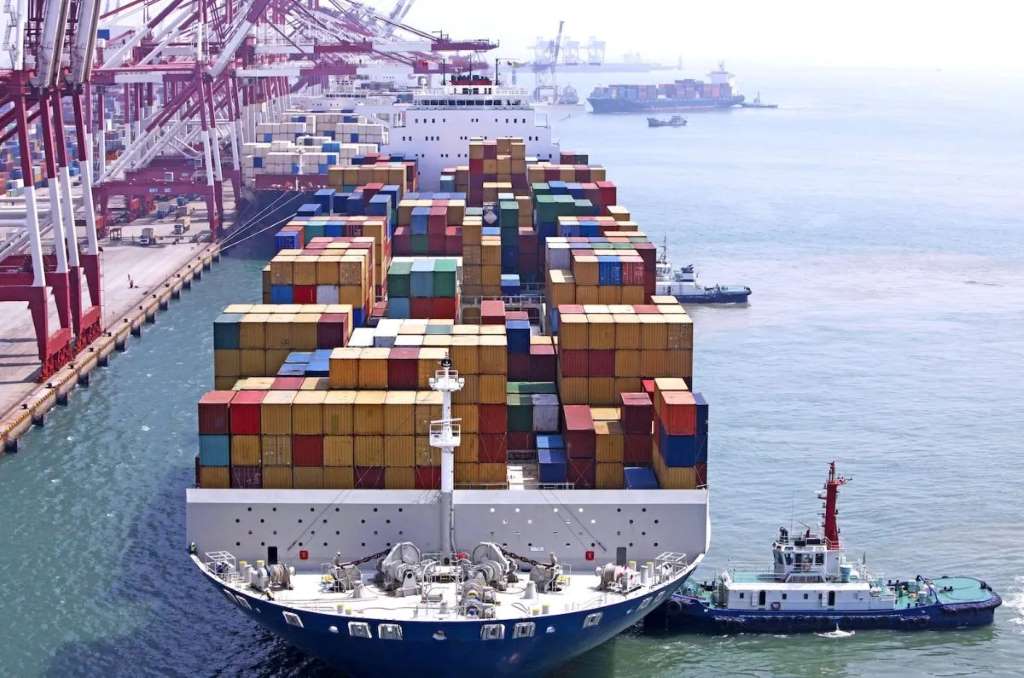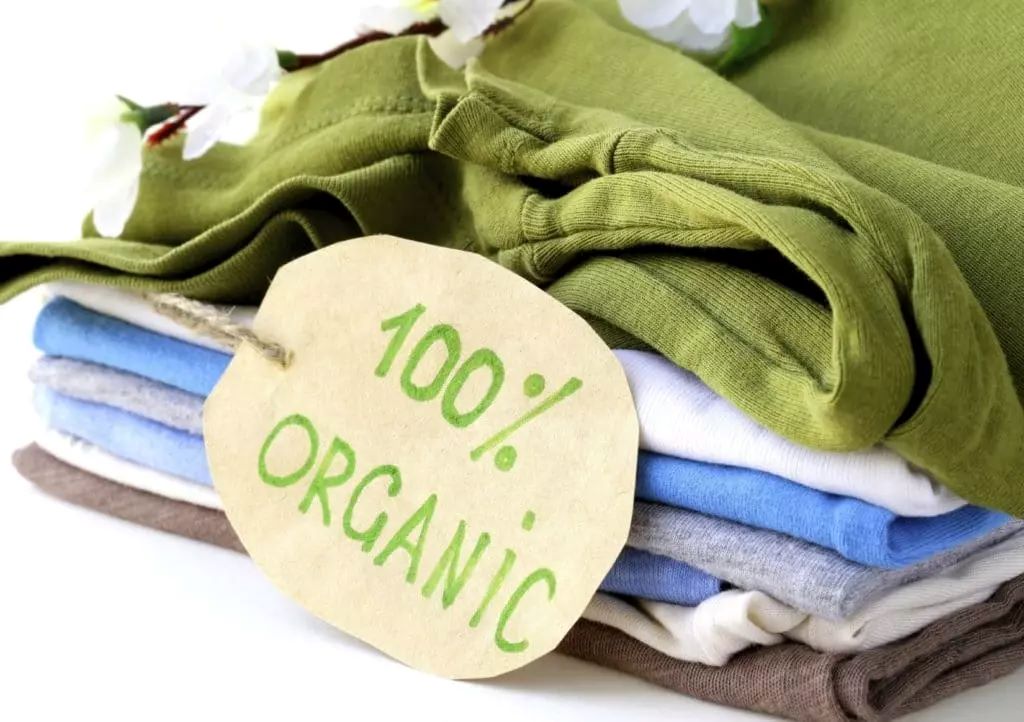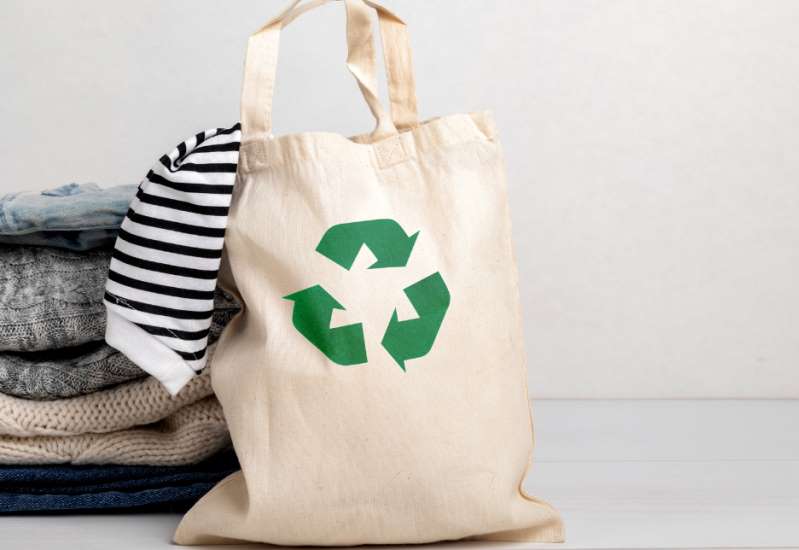FW
As predicted by textile trendsetter, Italtex the autumn/winter 2024 promises to be luxurious and eco-conscious season with cotton taking the center stage in collection with a focus on rich colors, playful textures, and sustainable practices.
Here's a peek at a few of these exciting upcoming trends in cotton:
1. Rising supremacy of lilac & purple: This season, cotton embraces elegance with purple and soft lilac hues adorning jacquards. These would sometimes be paired with bold abstract prints. The color purple will take on various forms ranging from classic suits to modern tweeds, thus offering something for every style.
2. Modern twist to winter blues: Winter blues will get a refreshingly modern twist as they intertwine with grays in jacquard wool coats. Graphic motifs and unexpected details like 3D-printed flowers will adorn knit felt. The shade blue will be combined with cream and red in chunky tweeds to give them a more sporty look. Cotton knits will be transformed with shimmering chenille and playful transparency effects. Rich, velvety blues with eye-catching prints will add a touch of drama to the outfit.
3. A sensual touch to black: This season black takes on a sensual and innovative approach with intricate embroideries on delicate tulles creating a captivating lace-like effect. Boldness will rule with shiny coatings on geometric jacquard jerseys. Textures take center stage with embossing on lightweight fabrics and technical applications on parachute cloth, softened by beautiful embroidery. Ultra-light jerseys will showcase tattoo like patterns with their stunning interplay between opacity and transparency.
Thus, the cotton fabric trends for A/W 2024 promise a captivating blend of timeless elegance, eco-conscious practices, and cutting-edge innovation.
Marks and Spencer (M&S) is aiming to be a net zero business by 2040 and has launched a £1 million fund to accelerate this goal. The Plan A Accelerator Fund will support innovative projects with existing and new suppliers.
One project involves a first-of-its-kind clothing recycling trial with Oxfam. Unwearable clothes donated to Oxfam will be turned into new materials, preventing them from going to landfill. This aligns with M&S's focus on a circular fashion economy.
Another project uses AI to optimize heating and ventilation in stores, potentially saving thousands of tons of carbon annually if rolled out across all stores.
Other initiatives include exploring green hydrogen fuel, a shoe recycling program, and agricultural tech using eco-friendly methods.
M&S CEO Stuart Machin emphasizes the company's commitment to innovation and collaboration to achieve net zero. He highlights the potential of these projects to make a significant impact on climate challenges.
This comes after M&S invested in Nobody's Child, an eco-conscious fashion brand, and saw a sales increase in clothing and home ranges, suggesting a positive response to their sustainability efforts.

Polyester product exports from China, a major global supplier, have dipped in the first two months of 2024, raising concerns about the industry's health. According to customs data, total exports reached nearly 1.803 million tons, down 18,000 tons year-on-year. This decline is primarily driven by significant drops in polyester filament yarn (PFY) and staple fiber exports, falling 63,000 tons and 26,000 tons respectively.
Reasons for the decline
Several factors might be contributing to the decrease in Chinese polyester exports.
• Weakening global demand: The global economic slowdown and rising inflation in key markets like Europe and the US could be dampening demand for polyester products.
• Shifting production base: The textile industry's migration to Southeast Asian countries like Vietnam could be impacting China's polyester exports as these countries establish their own production capabilities.
• Post-lunar New Year slump: The data might not be fully representative due to seasonal fluctuations. The pre-holiday stocking and bullish market sentiment before the Lunar New Year might have led to inflated expectations, resulting in a post-holiday order cool down.
Impact on global polyester business
The decline in Chinese exports, particularly of filament yarn and staple fiber, could lead to a temporary surplus in the global market, potentially putting downward pressure on prices. While filament yarn and staple fiber exports fell, the story highlights a rise in downstream polyester yarn and woven fabrics exports. This suggests that manufacturers in other countries might be picking up the slack, but the long-term impact remains unclear.
Table: (Jan-Feb 2024 vs. YoY) - Key Products (in thousand tons)
|
Product |
Exports (2024) |
Change (YoY) |
|
Polyester Filament Yarn (PFY) |
601 |
-63 |
|
Polyester Staple Fiber (PSF) |
169 |
-26 |
While the initial data shows a decrease in exports, the broader picture remains complex: Despite the decline in filament yarn and staple fiber exports, other segments of the polyester industry chain, like polyester filament woven fabrics, have shown growth . This suggests continued downstream demand for polyester products.
However, further observation is needed to understand the long-term impact on demand. The post-holiday order cool down might be temporary, and the full-year picture could be different.
The future of Chinese polyester exports and the global market depends on several factors.
• Post-pandemic recovery: The global economic recovery post-pandemic will significantly influence demand for polyester products.
• Geopolitical tensions: Trade tensions or disruptions in raw material supply chains could further impact exports.
• Sustainable practices: Growing consumer preference for sustainable clothing could push the industry towards recycled polyester, potentially impacting demand for virgin polyester.
The initial decline in Chinese polyester exports in 2024 warrants close monitoring. While the reasons for the decline are not entirely clear, a combination of global economic factors, industry shifts, and seasonal fluctuations could be at play. The impact on the global market and the future demand-supply situation remain uncertain and require further analysis.

The cotton shirt, a wardrobe staple for generations, is facing a new challenge: man-made fibers (MMF). This shift in the global shirt industry is driven by a confluence of factors – functionality, affordability, and ever-evolving fashion trends.
A balancing, cost vs performance
Cotton reigns supreme in breathability and comfort, but its price fluctuations and water-intensive cultivation cast a shadow. Studies reveal that MMF currently holds a staggering 70% share in global fiber consumption. "Consumers are willing to pay more for a shirt that offers superior performance and comfort," says Sarah Jones, a textile analyst. Brands are responding with a spectrum of options catering to diverse budgets and needs. Synthetic fibers, generally cheaper to produce, are a boon for fast fashion and budget-conscious consumers. Fast fashion giant H&M exemplifies this by actively incorporating recycled polyester into their clothing lines, touting affordability alongside sustainability benefits.
Function reigns supreme
Beyond cost, synthetic fibers offer functionalities that cotton struggles to match. Analysts at Apparel Views highlight the growing demand for performance-driven textiles. Polyester and nylon blends, renowned for their wrinkle resistance, require minimal ironing – a major perk in today's fast-paced world. "Synthetic fibers offer features like wrinkle resistance, moisture-wicking, and durability," points out Faruk Hasan, President of the Bangladesh Garment Manufacturers and Exporters Association (BGMEA). These features are particularly sought after in activewear and performance shirts, but are increasingly finding their way into everyday wear as well.
The rise of blends
While synthetics are gaining ground, pure polyester isn't the only story. Blended fabrics, particularly cotton-polyester mixes, offer a middle ground. Industry estimates suggest MMF already hold a significant 70% share of global fiber consumption. These blends combine the breathability of cotton with the wrinkle resistance and affordability of synthetics. The future likely lies in even more innovative hybrid fabrics that bridge the gap between comfort and functionality.
Regenerated cellulose fibers like rayon are gaining traction for being a natural alternative to synthetics while maintaining some of their functional benefits. Some studies indicate rayon has displaced wool in many important uses, including shirting, due to its affordability and comfort. Fashion trends also play a role. The rise of athleisure and activewear, with their focus on moisture-wicking and flexibility, has pushed up demand for synthetic fabrics designed specifically for performance. Patagonia, a leader in outdoor apparel, exemplifies this trend. Their ‘Capilene Cool Lightweight Shirt’ is made with a recycled polyester blend that prioritizes moisture-wicking and breathability, perfect for active pursuits.
A global landscape woven with diverse fabrics
The shift towards synthetics isn't uniform across the globe. The US market, for example, presents a complex picture. While synthetics dominate apparel consumption (around 75 per cent), cotton imports still hold a slight edge over man-made fibers. Rising oil prices, which impact synthetic fiber production, could temporarily swing the pendulum back towards cotton.
The European market shows a growing interest in sustainable alternatives. Regenerated cellulose fibers, like viscose rayon derived from wood pulp, are gaining traction due to their eco-friendly appeal. However, even in Europe, the demand for wrinkle-free and easy-care shirts is driving a rise in synthetic blends.
The future of shirt fabrics likely lies in innovation. Sustainable alternatives like Tencel, a wood-based fiber, are gaining traction. "We're seeing a growing interest in eco-friendly synthetics made from recycled materials," says Marie Dubois, a fashion designer specializing in sustainable clothing. The industry is also exploring new ways to improve the comfort and breathability of synthetics, potentially blurring the lines between natural and man-made fibers.
The cotton shirt may not be facing extinction, but the industry is clearly weaving a new narrative. Consumers seeking function, affordability, and sustainability will have a wider range of fabrics to choose from, ensuring a comfortable and stylish fit for the future.
Propelled by the performance of its flagship brand Uniqlo in North America, Europe and South-East Asia, Japanese ready-to-wear group, Fast Retailing reported exceptional half-year results. The company has slightly adjusted its full-year profit forecast following these promising figures.
The company’s net profit during the first half, spanning from September 2023 to February 2024, rose by 27.7 cent to 195.9 billion yen (approximately €1.2 billion). The company’s operating profit also increased by 16.7 per cent Y-o-Y to 257 billion yen.
Sales of the company increased by 9 per cent to 1,598.9 billion yen. This growth was driven primarly by Uniqlo's robust international performance, alongside the contribution of the group's second major brand, GU.
However, the company registered a 2 per cent decline in the Uniqlo sales in domestic market in Japan Fast Retailing attributed this underperformance to insufficient product offerings tailored for a warmer-than-usual winter, as well as communication issues regarding its products.
Similarly, in China, Uniqlo faced challenges due to a milder winter and a slowdown in consumer spending.
The group's other brands, including Theory, PLST, Comptoir des Cotonniers, and Princesse tam.tam, reported a slight decrease in total sales by 1.2 per cent Y-o-Y and incurred an operating loss of 1.7 billion yen (€103 million).
Fast Retailing mentioned that the reduction in the number of Comptoir des Cotonniers shops by 10 per cent compared to the previous year contributed to the decline in sales.
Despite these challenges, the company remains optimistic about achieving record results for the fiscal year 2023/24. It has raised its annual profit forecast by 8 per cent Y-o-Y to 320 billion yen. However, it slightly adjusted its sales forecast to 3,030 billion yen, maintaining robust sales growth at 9.5 per cent Y-o-Y.
Propelled by the performance of its flagship brand Uniqlo in North America, Europe and South-East Asia, Japanese ready-to-wear group, Fast Retailing reported exceptional half-year results. The company has slightly adjusted its full-year profit forecast following these promising figures.
The company’s net profit during the first half, spanning from September 2023 to February 2024, rose by 27.7 cent to 195.9 billion yen (approximately €1.2 billion). The company’s operating profit also increased by 16.7 per cent Y-o-Y to 257 billion yen.
Sales of the company increased by 9 per cent to 1,598.9 billion yen. This growth was driven primarly by Uniqlo's robust international performance, alongside the contribution of the group's second major brand, GU.
However, the company registered a 2 per cent decline in the Uniqlo sales in domestic market in Japan Fast Retailing attributed this underperformance to insufficient product offerings tailored for a warmer-than-usual winter, as well as communication issues regarding its products.
Similarly, in China, Uniqlo faced challenges due to a milder winter and a slowdown in consumer spending.
The group's other brands, including Theory, PLST, Comptoir des Cotonniers, and Princesse tam.tam, reported a slight decrease in total sales by 1.2 per cent Y-o-Y and incurred an operating loss of 1.7 billion yen (€103 million).
Fast Retailing mentioned that the reduction in the number of Comptoir des Cotonniers shops by 10 per cent compared to the previous year contributed to the decline in sales.
Despite these challenges, the company remains optimistic about achieving record results for the fiscal year 2023/24. It has raised its annual profit forecast by 8 per cent Y-o-Y to 320 billion yen. However, it slightly adjusted its sales forecast to 3,030 billion yen, maintaining robust sales growth at 9.5 per cent Y-o-Y.
Coupled with the military government's imposition of conscription in February 2024, the civil war has significantly disrupted workforce planning in the apparel sector of Myanmar.
The threat of conscription is prompting many youngsters to leave the country amidst ongoing armed conflicts. Reports of military units forcibly recruiting workers, especially during nighttime, have only added to the anxiety, leading to a wave of resignations and a decline in the workforce.
The upcoming Burmese New Year, 'Thingyan', in April 2024 is anticipated to further exacerbate the labor crisis, with projections suggesting that up to 5 per cent of the workforce may not return to factories after the holiday, opting instead to stay home or seek opportunities in neighboring countries like Thailand.
Moreover, the military government's loss of territory to pro-democracy armed groups and ethnic militias along Myanmar's borders has disrupted logistical operations, affecting manufacturers relying on land routes for import and export.
Despite these challenges, areas like Yangon, Bago, and Pathein, where major garment factories are located, remain under military control, benefiting the regime financially.
However, workers continue to suffer due to low wages, lack of benefits, and harsh working conditions, with some factories even facing allegations of labor violations. While the loosening of foreign exchange controls in 2023 has eased transactional processes for garment manufacturers, the industry remains vulnerable to the volatile economic and political landscape.
Although major trading partners like the US and the European Union have refrained from imposing general sanctions to protect businesses and workers, concerns about reputational risks have prompted some companies to withdraw from Myanmar, citing labor violations.
Furthermore, economic challenges, including high inflation and trade disruptions, coupled with stagnant growth, pose significant hurdles for the country's apparel sector. Despite operating amidst adversity, there has been a notable absence of new investments in the industry since the military coup.
With labor rights violations on the rise and industry insiders continuing to express pessimism about the future, the outlook for the apparel sector in Myanmar looks grim. As the country grapples with instability and economic woes, the once-promising garment sector faces an uncertain future, with potential repercussions for both workers and businesses alike.
Scheduled from November 6 to 9, 2024, Texcare International in Frankfurt am Main will showcase the latest innovations in automation within the textile-care industry.
The trade show will highlight the growing importance of RFID technology as a crucial tool for laundry management, offering comprehensive traceability. Tags embedded in textiles contain pertinent information, eliminating the need for manual barcode reading and enhancing operational transparency through wireless systems.
Innovations such as those from Denmark's Inwatec automate soiled laundry inspection and sorting. The intelligent technology separates, recognises, and classifies laundry items, while X-ray scanners automatically detect and remove unwanted items, minimising manual intervention and reducing the risk of injuries and contamination.
The exhibition will also highlight advancements in scanning technology that enable automated quality control for dry laundry, ensuring only flawless items proceed through the process.
Automation has revolutionised the folding and stacking process by using state-of-the-art equipment, including robots and intelligent control systems that streamline tasks such as terrycloth folding, improving efficiency and reducing reliance on manual labor.
Additionally, automation extends to the packaging stage, with systems like those developed by the Jensen Group facilitating the automated sorting and transport of clean laundry to the packing station, further reducing the need for manual intervention and enhancing overall efficiency.
While automation continues to revolutionise the textile-care industry, human skills remain indispensable for tasks requiring cognitive abilities, such as coding, individualisation, and quality control. However, as technology advances, it is likely that further automation will be seen in these areas, complementing human expertise and improving overall efficiency in textile care.
Renowned for its globally affordable clothing, online fast-fashion retailer Shein faces a mounting boycott campaign amid allegations of being involved in the forced labor of Uyghur Muslims in China. Chicago-based human rights organisation Justice for All has urged Muslim women to boycott Shein, citing concerns over its sourcing practices.
Arslan Hidayat, Leader, Save Uyghur Campaign, emphasises, Shein's alleged use of forced labor exacerbates the oppression faced by the Uyghur community. He urges Muslims to protest against such practices and demonstrate solidarity with the affected group.
However, Shein denies any involvement in forced labor and asserts a zero-tolerance policy regarding such practices. The company reiterates its commitment to human rights and compliance with US laws, requiring its contract manufacturers to source cotton only from approved regions.
Nevertheless, worries persist regarding Shein's use of Xinjiang cotton, prohibited under the Uyghur Forced Labor Prevention Act. Despite US bans on Xinjiang imports, Shein's shipments often evade scrutiny through customs loopholes, allowing them to enter the US market unchecked.
In response to bipartisan calls for action against imports linked to forced labor, experts emphasise the need for more comprehensive measures. Yalkun Uluyol, a research consultant, advocates for a more inclusive entity list targeting companies with documented evidence of forced labor practices.
Despite the controversy, Shein continues to attract customers, especially during Ramadan, with its affordable Islamic clothing options. Social media influencers, including Muslim YouTubers, have partnered with Shein to showcase its products, further bolstering its popularity.
According to the latest update from the Committee on Cotton Production and Consumption, estimates for cotton crop production for the 2023-24 season have been revised to 323.11 lakh bales from the previous estimate of 316.57 lakh bales.
Subdued global demand and anticipation of a better crop in countries like Australia has resulted in a downturn in the cotton market lately. This downturn is reflected in the recent performance of the May cotton futures contract on the Intercontinental Exchange (ICE), which peaked at 103.80 cents on February 28 but has since declined to 85.89 cents as of April 10. The December 2024 contract is hovering around 82 cents.
The decline in international cotton prices, approximately 17-18 per cent from recent highs, can be attributed to weak demand, particularly from China. Domestic prices in India have also decreased by 8-9 per cent.
Multinational traders in India have initiated selling for delivery in April, May, June, and July, primarily driven by the decline in ICE futures and subdued demand. Notably, companies like Viterra, COFCO International, and Louis Dreyfus Company are offloading their stocks, which are being absorbed by traders and mills.
Despite a slowdown in arrivals, there's an ample supply of cotton, with the Cotton Corporation of India (CCI), ginners, and traders maintaining sufficient stocks. Daily arrivals across various states are approximately 50,000-60,000 bales of 170 kg each. The CCI has procured 32.84 lakh bales at the minimum support price for the 2023-24 season and has sold 5.12 lakh bales so far, leaving stocks at 27.72 lakh bales.
However, farmers and ginners are expressing discontent this year due to unprofitable cotton prices, as highlighted by Pradeep Jain, Khandesh Gin Press Factory Owners Association. Arrivals are minimal, and demand is weak, with farmers possibly withholding stocks in anticipation of better prices.
While most North Indian cotton mills have secured their requirements for the next six months, they are exercising caution in their purchases due to limited demand for yarn at higher prices. Moreover, export opportunities are constrained due to a lack of price parity.
In the North Indian market, there's a noted shortfall in supplies, despite the lower domestic prices, according to Sushil Phutela, Indian Cotton Association.












